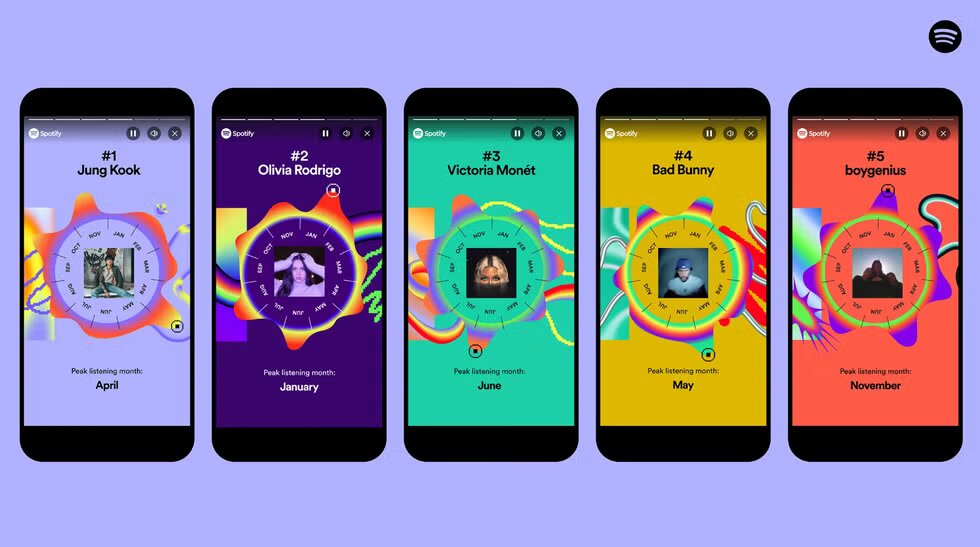Visual Storytelling Strategies To Captivate Your Audience

Visual content is more than just an attention-grabber; it’s a powerful tool for conveying your brand’s story and forging a deep connection with your audience.
In today’s fast-paced digital landscape, captivating visuals are essential for making an immediate impact. They’re more engaging than text alone, capture attention quicker, and can hold it longer. This is especially important since attention spans are getting shorter and shorter.
Big digital advertising agencies understand the importance and power of ad creatives and invest tons of time and money into creating them.
Before we delve into some effective visual storytelling strategies that can up your creative marketing game, let’s talk about the core principles of visual content and how it can elevate your brand’s narrative.
The Power of Visual Content and the Science Behind It
Visual content — like images, videos, UGC, and graphics — plays an important role in storytelling and emotional engagement. Our brains process visuals at astonishing speeds, with research indicating that images can be understood in as little as 13 milliseconds.
Here’s why visual content is indispensable:
- Memory Retention: Visuals enhance memory retention. After three days, people remember about 65% of visual content compared to just 10% of text.
- Emotional Resonance: Visuals evoke emotions more effectively than words, creating a lasting impact.
- Increased Shareability: Visual content is more likely to be shared on social media, increasing a brand’s reach and visibility.
- Boosts Conversion Rates: Visual content can influence purchasing decisions. High-quality images and videos of products or services can enhance their appeal, leading to higher conversion rates. The same goes for authentic UGC.
- Instant Storytelling: A single image can tell a complex story instantly, without lengthy explanations. We all know the saying that an image says more than a thousand words.
- Attention-grabbing: Visuals naturally draw attention, making them the first thing people notice online.
- Humanizes the Brand: Visuals, especially user-generated content that shows behind-the-scenes content or customer stories, can humanize a brand. This helps in building trust and a more personal connection with the audience.
Understanding these psychological principles is crucial for creating compelling visual content.
Visual Creative Marketing Strategies to Captivate Your Audience
Exploring various forms of visual content can uncover innovative ways to engage your audience. Here are some tips that can help you boost your performance.
1. Focus on the story, not just the visuals.
Visual storytelling goes beyond mere images. Visuals should weave a clear and consistent narrative for your brand. Even if each visual asset doesn’t convey an obvious story on its own, your audience should be able to follow the overall narrative.
Our advice? Think like a storyteller. What is the message you want to convey? Then plan your visual media to represent and relate this message across all your platforms.
We love how the mindfulness app Calm executes this.
2. Capture Authentic Moments with Photos.
Photos serve as windows into the past, connecting your audience with the emotions and experiences captured in each frame. Whether it’s a candid team shot or a stunning product photo, images build authenticity and trust.
Dove’s #TurnYourBack campaign used simple yet powerful photos to raise awareness about the negative effects of social media filters. These images helped drive deeper connections while championing a cause.
3. Align Your Visual Storytelling with Your Marketing Content Strategy.
Simply posting a photo or video online and waiting for results to flood in is not a strategy. Nor is relying on the hope that your visual content will go viral — it most likely will not. Like any content marketing format, visual storytelling requires an effective strategy to convert views into conversions.
Before your creative team starts brainstorming, ensure they address these crucial questions:
- What are we trying to accomplish with our visual content?
- Who is our target audience? What types of content experiences engage them?
- What problems does our brand solve?
- What is our vision of what makes our brand unique? How can we communicate these messages compellingly and consistently?
- What metrics will we use to measure success? For which search terms should this image appear in search engine results?

Photo Via: Tinder
4. Simplify Complexity With Graphics
Graphics, such as charts and data visualizations, transform complex data into engaging visual stories. They make information more accessible and understandable, cutting through the noise with clarity.
We’re big fans of Spotify’s Wrapped campaign, which offers customers a personalized recap of their music journey. Using vibrant colors and striking graphics, Spotify transforms each user’s listening history into a fun and highly shareable data story.

Photo Via: Cosmopolitan
5. Dynamic Storytelling with Video Formats
Videos combine moving images and sound to create a multisensory storytelling experience. Whether you create short clips like Memes that are humorous and highly shareable and can spread your message quickly or you hire a UGC creator to create authentic videos that gain trust — videos are versatile and impactful. They should play a major role in your overall marketing strategy.
Embracing Visual Storytelling
Mastering visual storytelling enables you to capture attention, evoke emotions, build trust, and inspire action. It’s a highly powerful medium to convey your message and leave a lasting impression on your audience in an ever-evolving digital world when done correctly. Building a high-level visual storytelling marketing strategy takes experience and expertise, which is where digital advertising agencies and creative marketing agencies can step in.
How can GeistM help?
At GeistM, we excel in enhancing visual storytelling strategies to maximize conversions through innovative and engaging content. Our expertise in user-generated content (UGC) videos allows us to create authentic and trustworthy visuals that resonate deeply with your audience, and combined with our unique content strategy they can help you to maximize results.
Additionally, our comprehensive approach includes utilizing memes, infographics, animations, and other dynamic video content to ensure your brand’s story is compellingly told across all platforms, ultimately leading to higher engagement and increased conversion rates.If you’re ready to take your storytelling to the next level, contact us today.




